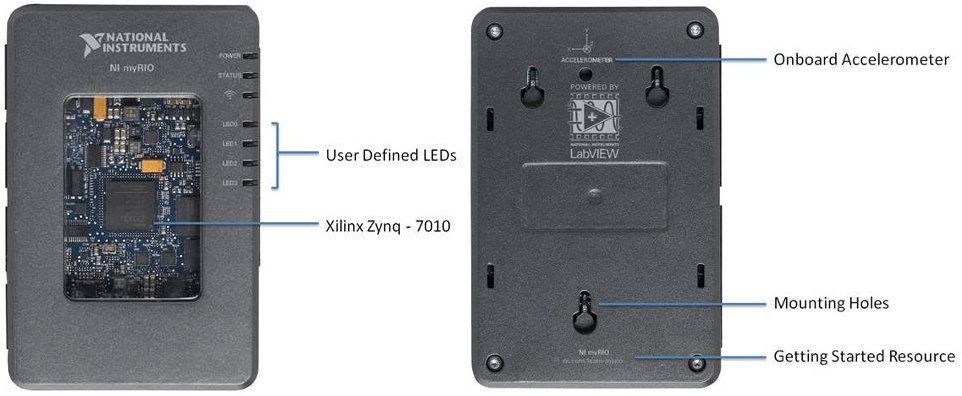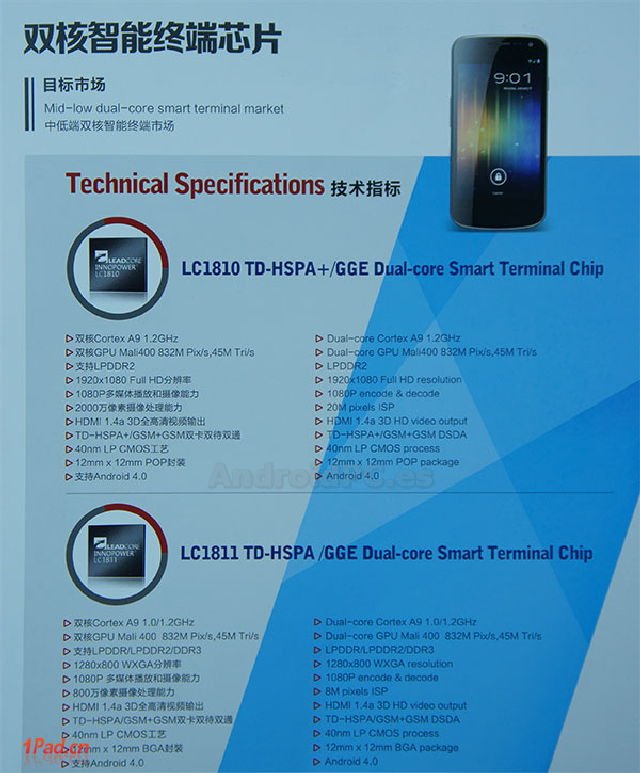WeWi Telecommunications has designed a solaptop (Solar-powered laptop) with 4 foldable solar panels in order to recharge the battery. WeWi SOL is powered by Intel Atom D2500, with 4GB RAM, features a 13.3″ display, and runs Ubuntu. It will be sold for only $300 to $400. WeWi SOL specifications: CPU – Intel Atom D2500 @ 1.86 GHz Dual Core, Intel 945GSE + ICH7M GPU – Built-In Intel GMA3600 Graphics, 1080p HD Video System Memory – 2 to 4GB DDRIII SDRAM (Kingston) Storage – 2.5” SATA HDD 320GB (Seagate) + Card reader (SD/MS/MMC) Display – 13.3″ LCD, WXGA, 1366 x 768 Video Output – HDMI Audio – Realtek ALC661 HD Audio, built-in stereo speakers, internal mic + 3.5mm headphone jack Connectivity: 10/100M Ethernet 3G/4G World/multimode LTE Modem GPS (gpsOne Gen8A) WiFi – MIMO 802.11b/gn (2.4/5GHz) Bluetooth – Integrated Digital Core BT4.0 USB – 3x USB 2.0 Camera – 3MP Battery Operating Time […]
LinuxCon North America 2013 Schedule
LinuxCon (North America) 2013 will take place on September 16 – 18, 2013 in New Orleans, LA. The event will be co-located with several other conferences: the Linux Plumbers Conference, the Xen Project User Summit, the OpenDaylight Mini-Summit, the Gluster Workshop 2013, the UEFI Plugfest, the Linux Wireless Summit, the Linux Security Summit, and CloudOpen 2013. LinuxCon consists of 3 days of keynotes, and legal, operations, and developers related sessions as well as tutorials and workshops. There will be around 150 sessions and keynotes during those 3 days. I’ve gone through developer sessions and selected one for each time period. Monday, September 16 10:35 – 11:25 – UEFI and Linux by Kirk Bresniker, HP UEFI has become ubiquitous on the PC client systems and is coming up on servers and ARM-based systems, it is becoming the converged firmware infrastructure. UEFI Secure Boot feature has attracted a lot of attention from […]
NI myRIO is an Education Platform Powered by Xilinx Zynq-Z7010
National Instruments has been working on a device called NI myRIO, an hardware & software platform that aims at giving engineering students the ability to design real systems quickly for automation, robotics, data logging or embedded systems. The hardware is based on Xilinx Zynq-7010 with a dual-core ARM Cortex-A9 processor and an FPGA with 28,000 programmable logic cells, and features 10 analog inputs, 6 analog outputs, audio I/O channels, and up to 40 lines of digital input/output (DIO). NI myRIO Hardware Specifications: SoC – Xilinx Zynq-7010 with a dual core Cortex A9 processor and FPGA with 28,000 cells System Memory – Unknown Storage – Unknown Expansion Ports: myRIO exPansion Ports (MXP) – Two identical ports (MXP A and MXP B) with 4 analog inputs, 6 digital inputs/outputs, 2 analog outputs, 1 quad encoder, 3 PWMs, 1 UART, 1 I2C and 1 SPI by default. Ports configuration is customizable with Labview […]
MINIX NEO X7Mini vs NEO X7 Android Media Players Comparison
MINIX officially announced their first quad core Android media player, named NEO X7, in early July, and it’s now available for around $140 on sites such as Aliexpress and Geekbuying. More recently, MINIX posted pictures and specifications for MINIX NEO X7mini, a cost down version of MINIX NEO X7. Let’s compare the two. The first (very obvious) difference is the lack of external Wi-Fi antenna on the MINIX X7mini, but that’s not all as shown in the comparison table below. NEO X7 NEO X7mini Processor Quad-Core Cortex A9 Processor (RK3188) Quad-Core Cortex A9 Processor (RK3188) GPU Quad-Core Mali-400MP Quad-Core Mali-400MP System Memory 2GB DDR3 2GB DDR3 Storage 16GB NAND Flash + SD/MMC Card Reader 8GB NAND Flash + SD/MMC Card Reader Connectivity Bluetooth, Ethernet, Dual-Band Wi-Fi (2.4GHz and 5GHz) Bluetooth, Ethernet, 802.11b/g/n Wi-Fi External Antenna Yes No USB 3 x USB Ports + 1 x OTG 2 x USB Ports […]
MK809III Quad Core Android mini PC May Soon Be Available With 4GB RAM, 16GB Flash
The price of quad core Android mini PCs keeps dropping and MK809III (aka QC802) is now available for just over $60 with Rockchip RK3188 SoC, 2GB RAM, and 8GB flash. The recent price drop is not quite large enough to be newsworthy, but one reader (and commenter) noticed something interesting in one product description. So this seller is apparently able to sell MK809III with 4GB RAM and 16GB Flash. 4GB RAM is probably overkill for Android, but it could be useful for those who want to run Linux. The sellers told him MK809III with 4GB RAM (and 8GB Flash) is available for $75, but the minimum order quantity (MOQ) is 20 pieces. I’ve also contacted the seller myself, and initially was told about the “MOQ 20” requirement, and that both 4GB RAM/8GB flash and 4GB RAM/16GB Flash could be made available. But when I asked about the price and lead […]
The “Smart Charger” Is Butane Powered, Tiny, and Holds About a Week of Power for your Smartphone
If you are on the go it may be problematic to keep your smartphone or/and tablet batteries charged at all times. You can always buy extra batteries but you need to remember to charge them before you go, and they may not hold enough power for your needs. Kobion is trying solve this problem with the “Smart Charger”, a charger powered by Butane holding up to 37.2 Wh of power (about 5 to 10 times a typical smartphone’s battery capacity) that you can carry around with you. The charger is in development, and the company is looking for funds in Indiegogo, asking for pledges of $59 (early bird), and then $69 to get the product manufactured at a low cost. You’ll also need to add $5 for shipping. Here are the technical specifications: Dimensions – 120 x 60 x 20 mm Weight – Around 200 grams (empty) Nominal Energy – […]
Leadcore Introduces LC1810, LC1811, LC1813, and LC1913 SoCs for Smartphones and Tablets
Mediatek, Rockchip, AllWinner among others are now well-known Chinese ARM SoC manufacturers for tablets, smartphones and set-top boxes. However, you may never have head about Leadcore Technology, a company based in Shanghai with over 1,000 employees, and a subsidiary of Datang Telecom Technology & Industry Group (Another company I had never heard of). The company has “recently” announced two dual core Cortex A9 SoCs for smartphones: LC1810 and lc1811, and two quad core Cortex A7 SoC for tablets: LC1813 and LC1913. LC1810 and LC1811 come with the following features: Dual-core Cortex A9 up to 1.2 GHz MALI-400 MP2 GPU LPDDR2 (both) and DDR3/LPDDR for LC1811 Maximum screen resolution: LC1810 – 1080p LC1811 – 1280×800 (WXGA) 1080p video encode and decode Camera: LC1810 – Up to 20MP LC1811 – Up to 8MP Video Out – HDMI 1.4a, 3D HD Network – GSM + GSM DSDA (Both), TD-HSPA+ (LC1810), and TD-HSPA (LC1811) […]
Android 4.3 x86 Test Image Is Now Available For Tablets and Netbooks
Android-x86 project has been working on porting Android OS to Intel and AMD Desktop PC and Laptop, and just about a week after Android 4.3 has been released in AOSP, the project’s team has already managed to provide an Android 4.3 x86 test image for desktop and laptop, probably helped by the recent push by Intel to have Android device powered by x86 processor. The test build (20130725) is based on Android 4.3 release (Jelly Bean-MR2 branch), and they’ve modified parts of the code to make it work with x86, especially on x86 tablets and netbooks. What’s impressive is that most of features appear to work, and they’ve almost managed to add some additional features. The key features in this release are Upgrade to the latest kernel 3.10.2 to support more drivers. Upgrade Mesa OpenGL ES library to 9.2-devel branch to support hardware acceleration for AMD Radeon and Intel chipsets (not […]













